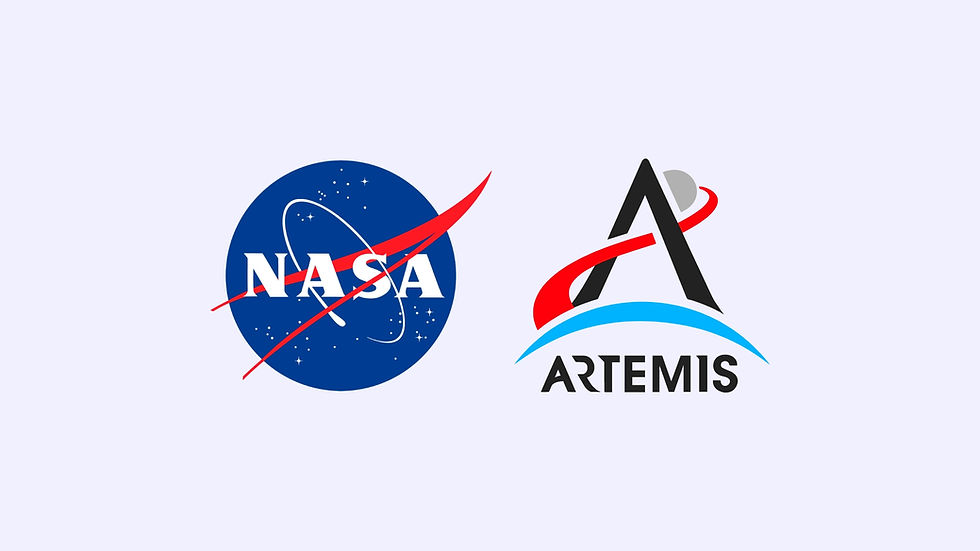Artemis Mission : Humanity’s Return to the Moon and Beyond
- Big Bang

- May 4
- 3 min read

In the grand tapestry of space exploration, few undertakings are as ambitious and symbolically potent as NASA’s Artemis Program. Named after the Greek goddess of the Moon and twin sister of Apollo, Artemis represents not only the United States' return to the lunar surface but also the dawn of a new era of sustained, inclusive, and scientifically driven exploration. With a roadmap that includes lunar bases, advanced space technology, and crewed Mars missions on the horizon, Artemis is more than a mission—it is the blueprint for humanity’s interplanetary future.
What Is the Artemis Mission?
Launched by NASA in collaboration with international and commercial partners, the Artemis Program is a multi-phase initiative aimed at landing the first woman and the first person of color on the Moon, establishing a long-term human presence, and preparing for future human missions to Mars. Unlike the Apollo missions, Artemis is designed with sustainability in mind—envisioning permanent infrastructure, reusable systems, and global collaboration. It integrates cutting-edge spaceflight technology, including the Space Launch System (SLS), the Orion spacecraft, the Gateway lunar space station, and advanced lunar landers.
The Four Core Phases of the Artemis Program
1. Artemis I – The Foundational Test Flight (Uncrewed)
Launched in November 2022, Artemis I served as a full, uncrewed test of the integrated SLS and Orion systems. The mission lasted over 25 days, sending Orion on a trajectory around the Moon and back to Earth. Its purpose was to validate performance, navigation, heat shielding, and re-entry systems in deep space conditions. Artemis I marked the most powerful rocket launch since Saturn V and laid the technological foundation for all subsequent phases.
2. Artemis II – First Crewed Lunar Flyby
Scheduled for 2025, Artemis II will be the first crewed Artemis mission. It will carry four astronauts aboard Orion for a lunar flyby, reaching further into space than any human has traveled in over 50 years. Although it won’t land on the Moon, it is critical for testing life-support systems, communications, and deep-space human operations—serving as the final proving ground before lunar surface operations commence.
3. Artemis III – Human Return to the Lunar Surface
Planned for 2026, Artemis III will make history by landing astronauts near the Moon’s south pole—a region rich in water ice and scientific potential. Utilizing SpaceX’s Starship Human Landing System (HLS), astronauts will transfer from Orion in lunar orbit to the surface for several days of exploration. This phase emphasizes scientific research, surface mobility, and testing new technologies crucial for long-term lunar presence and Martian missions.
4. Artemis IV and Beyond – Gateway and Lunar Infrastructure
Artemis IV, tentatively set for 2028, introduces the Lunar Gateway—a small, crew-tended space station in lunar orbit. It will serve as a waypoint and support hub for sustained lunar missions and future deep space travel. Artemis IV and later missions will deliver large habitat modules, advanced robotics, and scientific payloads, gradually building a permanent lunar infrastructure. These stages are essential to transforming the Moon from a destination into a launchpad for Mars.
Why Artemis Matters
The Artemis Program isn’t merely a symbolic return to the Moon—it is a strategic and scientific imperative. The Moon serves as a natural laboratory for understanding planetary geology, water resources, and solar system evolution. It also provides a low-gravity environment for testing life support, radiation protection, and propulsion technologies vital for Mars. Artemis fosters international cooperation, engages the private sector, and inspires future generations with its commitment to inclusivity, sustainability, and long-term vision.
Moreover, Artemis reflects a philosophical shift in space exploration: a move from heroic, one-time landings toward permanent, adaptive presence. It embodies a future where humanity is not confined to one planet but exists as a multiplanetary species, boldly extending its reach across the cosmos.

Comments